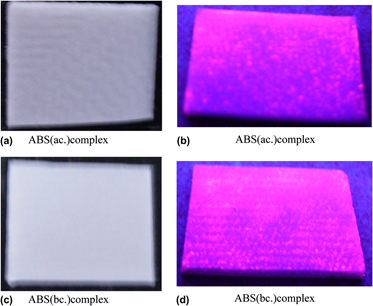Article contents
Ultraviolet sensors using a luminescent europium (III) complex on acrylonitrile butadiene styrene polymer
Published online by Cambridge University Press: 14 May 2012
Abstract

In this article, the sol-gel methodology was used for coating an acrylonitrile butadiene styrene (ABS) polymer prepared by the rapid prototyping technology with a colloid containing the europium III dipicolinic complex, which presents high emission when excited in the ultraviolet region. Either acid or base was used for treatment of the ABS polymer, with a view to activating its surface. The thermal analysis evidenced a residual mass after 600 °C, which indicated that the coating adhered to the substrate. X-ray diffraction analysis showed that the structure of the ABS polymer was not affected by the sol-gel treatment. The large band centered at 287 nm, ascribed to ligand-metal charge transfer, can be used to excite the europium III dipicolinic complex in the ultraviolet C and ultraviolet B regions. The emission appears in the characteristic red region of the electromagnetic spectrum. These results indicate that the obtained material is a candidate for use as ultraviolet sensor.
- Type
- Articles
- Information
- Copyright
- Copyright © Materials Research Society 2012
References
REFERENCES
- 8
- Cited by




